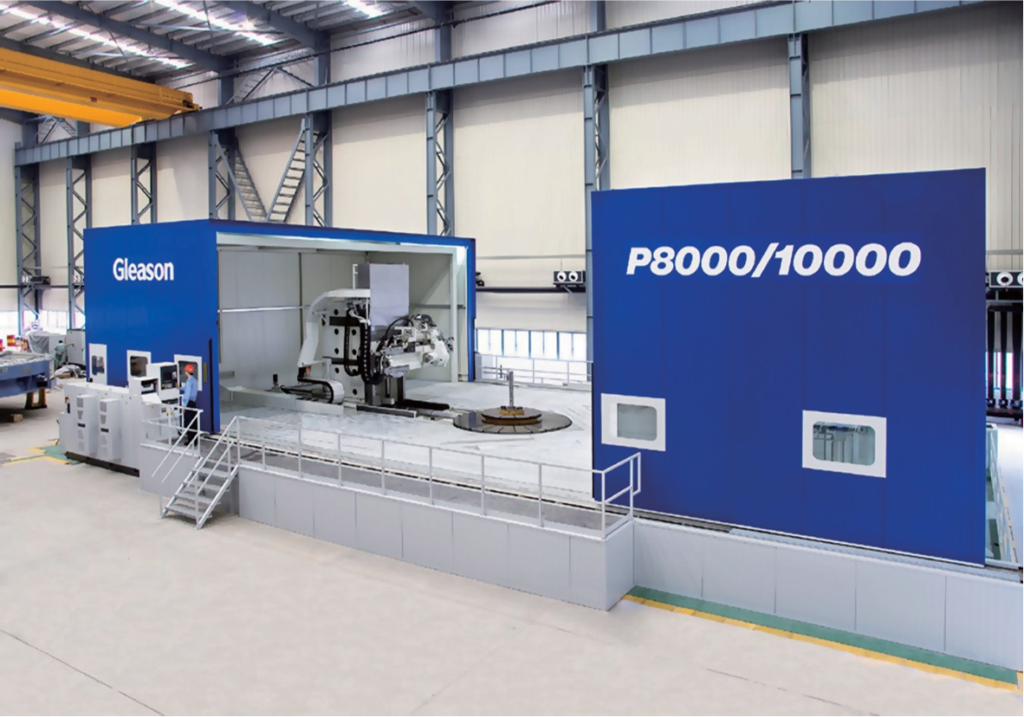The gear industry is the foundation of the mechanical sector, and compared to the mechanical equipment industry, the gear industry is the most technologically and financially intensive. Gears and their products are crucial components of mechanical equipment, serving as the primary transmission elements for the majority of complete mechanical systems. The gear industry stands as the largest sector within the realm of mechanical components. Since the initiation of economic reforms and opening-up policies, particularly after 2006, the gear industry has experienced rapid development, propelling China into the ranks of major gear manufacturing nations.
Current situation and scale
1. The scale of the industry continues to expand
During the 11th Five-Year Plan period (2006-2010), the gear industry experienced a high-speed growth phase, with an annual average growth rate of over 20% in total output value and over 30% in product exports. Transitioning into the 12th Five-Year Plan period (2011-2015), the industry entered a phase of consolidation with a slowdown in growth. The annual average growth rate of total output value fell to 4%, and the export growth rate dropped to 7%. Since the start of the 13th Five-Year Plan period (2016-2020) until now, the industry has entered a phase of stable development.
According to statistics on over 800 large-scale enterprises in the gear industry, the growth rates of operating income over the three years from 2019 to 2021 were 1.97%, 9.44%, and 13.3% respectively. The overall industry average profit margin reached 9%, demonstrating a steady growth trend. In 2022, the number of surveyed enterprises increased to 998. Due to the expanded scope of statistics and the impact of the COVID-19 pandemic, the growth rate of operating income in 2021 was 0.69%, with a total operating income of 182.8 billion yuan. Based on this large sample, historical data, and trade statistics, the actual total operating income of the gear industry is estimated to be around 300 billion yuan.
Looking at export data, the industry hovered around $6 billion USD before 2020. It reached a peak of $10 billion in 2021 but declined to $8.289 billion in 2022.
2. Outstanding Performance of Leading Enterprises
After years of market fluctuations, the backbone enterprises in the industry have undergone rigorous tests, achieving notable results in their transformation and upgrading efforts, significantly enhancing their risk resistance. These enterprises have intensified their focus on technological and product innovation, implementing initiatives for corporate informatization, sustainability, and intelligent transformation, with a commitment to high-quality development. This has led to the emergence of a group of enterprises that are advanced in management, produce high-end products, and possess international competitiveness.
For instance, NGC (Nanjing High Accurate Drive Equipment Manufacturing Group Co., Ltd.) has become the world’s largest producer of wind turbine gearboxes, showcasing strong international competitiveness. Despite the trade tensions between China and the United States, NGC has been largely unaffected due to the advanced nature of its products and irreplaceable competitive advantages. Another example is Shaanxi Fast Gear, now the world’s largest producer of heavy-duty truck transmissions, with annual sales revenue exceeding 20 billion yuan. The company, especially in the areas of information management and intelligent manufacturing, has set a benchmark for the gear industry.
Zhejiang Shuanghuan Company has accelerated its industrial restructuring in recent years, experiencing rapid growth in its business scale, with its main operating income surpassing 7 billion yuan. Pacific Precision Forging, while maintaining stability in the traditional automotive components market, has focused on expanding into new markets in the field of new energy vehicles and lightweight. The company has achieved rapid economic growth, with its operational performance rising against the trend in 2021, witnessing a year-on-year growth of 27% in operating income.
3. Significant Improvement in Innovation Capability
In recent years, the gear industry in China has achieved significant breakthroughs in the integration of production, education, research, and application in the common basic technologies of gears. In application areas such as high-speed rail, wind power, commercial vehicles, passenger cars, and the Three Gorges Project, a series of nationally impactful achievements have been attained, resulting in multiple first and second prizes in national science and technology progress awards. The overall assessment of China’s gear technology indicates proximity to international advanced levels and, in certain aspects, attaining a leading position globally.
For example, in the common basic technologies of gears, the project “Key Technologies and Industrialization of High-Load Gear Transmission Devices” collaborated on by companies like NGC and Zhengzhou Mechanical Research Institute has reached international advanced levels. In the industrial gear sector, collaborative efforts by NGC, Hangzhou Advance, and Zhongchi have elevated China’s wind turbine gearbox torque density to 200N.m/kg, with a single unit achieving a maximum power of 16MW, leading the international market. In the passenger car gearbox sector, projects such as the development and industrialization of the “Front-Drive 8-Speed Automatic Transmission” by Beijing University of Aeronautics and Astronautics won the 2016 National Science and Technology Progress Award, while the “Key Technologies and Applications of Parallel and Series Hybrid Powertrains for Passenger Cars” achieved significant energy-saving effects, with fuel consumption of 4.3L per hundred kilometers, successfully applied by companies like GAC and Great Wall.
In the commercial vehicle gearbox sector, the project “Key Technologies and Applications of Heavy-Duty Commercial Vehicle Powertrains” completed by Shaanxi Fast Gear received the 2018 National Science and Technology Progress Award. In the high-speed rail gearbox sector, the project “Highly Reliable Gear Transmission System for High-Speed Train” by Qishuyan Locomotive & Rolling Stock Technology Research Institute received the 2017 National Science and Technology Progress Award (Second Prize). In the marine gearbox sector, the project “Key Technologies of High-Power Marine Gearbox Transmission and Propulsion Systems” completed by Hangzhou Advance Gearbox Co., Ltd., Zhejiang University, and others received the 2017 National Science and Technology Progress Award (Second Prize).
Shortcomings in the Gear Industry
While significant progress has been made, there is still a certain gap between the gear industry in China and the international advanced level.
1. Imbalanced Industry Development
While leading enterprises demonstrate outstanding performance, many small and medium-sized enterprises face operational difficulties due to insufficient innovation, homogenous competition, and compressed profit margins. In 2022, the industry still had a 16% loss rate.
2. Incomplete Self-Sufficiency in High-End Gear Products
In 2021, China imported gear products worth $13.3 billion, resulting in a trade deficit of $5 billion. Among these imports, transmission boxes and parts for various vehicles accounted for 80%, indicating a lack of complete self-control in high-end gearboxes.
3. Reliance on Foreign High-End Design and Simulation Software
High-end design analysis and dynamic simulation software in China primarily come from abroad, and changing this reliance in the short term remains challenging.
4. Heavy Dependence on Imported High-End Gear Manufacturing Equipment and Measurement Instruments
In conclusion, China’s gear industry must steadfastly embrace innovation-driven strategies and pursue the path of high-quality development. We believe that with the collective efforts of the entire industry, the goal of transitioning from being large to being strong will undoubtedly be achieved.
Thank you for reading this article, and we look forward to serving you with our exceptional gear solutions. #BeyondGears
Read More:


